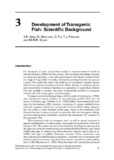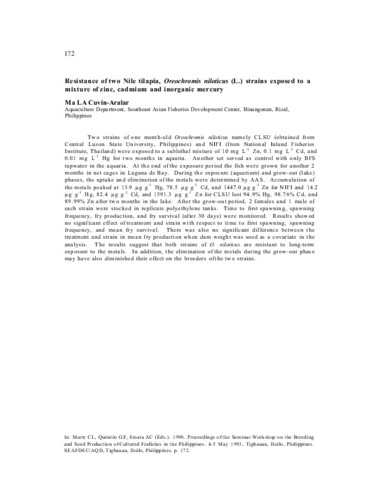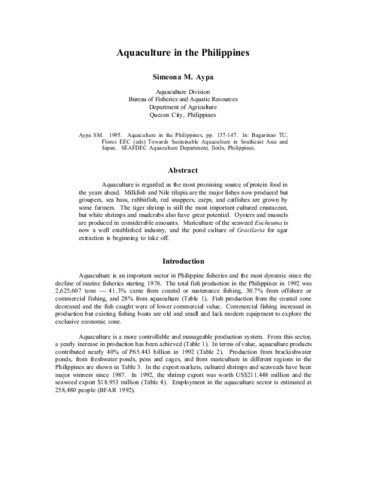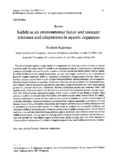Development of transgenic fish: scientific background
Share
Abstract
This chapter highlights some of the important examples of transgenic fish development. An overview of important steps in fish transgenesis is given. The status of development in the case of transgenic carp, tilapias, Atlantic salmon and mud loach is discussed. Other future applications of transgenic fish are presented. The key research and capacity needs for further development of transgenic fish are also discussed.
Suggested Citation
Nam, Y. K., Maclean, N., Fu, C., Pandian, T. J., & Eguia, M. R. R. (2007). Development of transgenic fish: scientific background. In A. R. Kapuscinski, K. R. Hayes, S. Li, G. Dana, E. M. Hallerman, & P. J. Schei (Eds.), Environmental risk assessment of genetically modified organisms, Volume 3. Methodologies for transgenic fish (pp. 61-94). Wallingford: CABI.
Subject
aquaculture  ; heat tolerance
; heat tolerance  ; disease resistance
; disease resistance  ; gene expression
; gene expression  ; genes
; genes  ; techniques
; techniques  ; biotechnology
; biotechnology  ; genetically modified organisms
; genetically modified organisms  ; growth
; growth  ; cold tolerance
; cold tolerance  ; metabolism
; metabolism  ; monitoring
; monitoring  ; phenotypes
; phenotypes  ; fishery production
; fishery production  ; infertility
; infertility  ; salt tolerance
; salt tolerance  ; somatotropin
; somatotropin  ; genetic engineering
; genetic engineering  ; transgenic animals
; transgenic animals 
 ; heat tolerance
; heat tolerance  ; disease resistance
; disease resistance  ; gene expression
; gene expression  ; genes
; genes  ; techniques
; techniques  ; biotechnology
; biotechnology  ; genetically modified organisms
; genetically modified organisms  ; growth
; growth  ; cold tolerance
; cold tolerance  ; metabolism
; metabolism  ; monitoring
; monitoring  ; phenotypes
; phenotypes  ; fishery production
; fishery production  ; infertility
; infertility  ; salt tolerance
; salt tolerance  ; somatotropin
; somatotropin  ; genetic engineering
; genetic engineering  ; transgenic animals
; transgenic animals 
Collections
Related items
Showing items related by title, author, creator and subject.
-
Resistance of two Nile tilapia, Oreochromis niloticus (L.) strains exposed to a mixture of zinc, cadmium and inorganic mercury
Cuvin-Aralar, Ma. L. A. (Aquaculture Department, Southeast Asian Fisheries Development Center, 1996)Two strains of one month-old Oreochromis niloticus namely CLSU (obtained from Central Luzon State University, Philippines) and NIFI (from National Inland Fisheries Institute, Thailand) were exposed to a sublethal mixture ... -
Aquaculture in the Philippines
Aypa, Simeona M. (Aquaculture Department, Southeast Asian Fisheries Development Center, 1995)Aquaculture is regarded as the most promising source of protein food in the years ahead. Milkfish and Nile tilapia are the major fishes now produced but groupers, sea bass, rabbitfish, red snappers, carps, and catfishes ... -
Sulfide as an environmental factor and toxicant: Tolerance and adaptations in aquatic organisms
Bagarinao, Teodora (Elsevier, 1992)This review brings together a large number of independent and seemingly unrelated studies in various disciplines under four major topics: (1) sulfide as an environmental factor in aquatic habitats; (2) sulfide as a toxicant; ...




